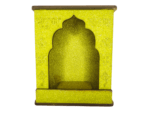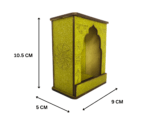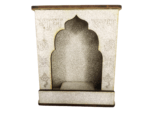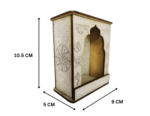Introduction to MDF Temples: Significance and Design
Medium Density Fiberboard (MDF) has emerged as a favored material in contemporary temple construction due to its remarkable durability and versatility. Its popularity stems from its ability to be easily manipulated into various shapes and designs, allowing artisans and designers to create intricate details that familiar traditional temple aesthetics demand. Moreover, MDF is eco-friendly, appealing to a growing audience concerned with sustainable practices in construction. This material presents a unique opportunity to merge modern design principles with the cultural significance of temples.
Temples hold profound cultural and spiritual significance across various traditions, serving as places of worship, reflection, and community gathering. They encapsulate the values and beliefs of different societies, often representing a connection between the divine and the earthly. By utilizing MDF in temple construction, individuals can construct spiritual spaces that resonate with both traditional aesthetics and contemporary needs. An MDF temple can embody grace and elegance while ensuring durability against environmental factors and time.
Different design styles can be applied to MDF temples, allowing individuals to personalize their spiritual spaces to reflect their beliefs and tastes. From minimalist designs that emphasize simplicity and functionality to more ornate styles that incorporate intricate carvings and embellishments, the options are virtually limitless. Themes can range from classic, reflecting the traditional architecture of historical temples, to modern interpretations that highlight geometric shapes and a play on light and shadow. This adaptability not only enhances the visual appeal but also fosters a deeper connection to the space for practitioners, making the experience more meaningful.
In summary, the use of MDF in temple construction represents a harmonious blend of tradition and modernity, promoting sustainability while enabling personal expression in spiritual design.
Step-by-Step Guide to Building Your Own MDF Temple
Creating an MDF temple is a fulfilling project that combines creativity with spirituality. To begin, gather the necessary materials: high-quality MDF sheets, wood glue, screws, and decorative elements such as paint, veneers, or spiritual symbols that resonate with your beliefs. Ensure you have essential tools on hand, including a circular saw or jigsaw, drill, measuring tape, and a sanding block. Safety should be a priority—always wear protective eyewear and a dust mask to shield against MDF dust during cutting.
The first step is to design your temple layout. Think about the size and shape that would best suit your space and reflect your spiritual needs. An accurate drawing or digital design will be beneficial. Once satisfied with your design, take precise measurements and transfer these onto the MDF sheets. Cut the pieces accordingly, adhering to safety protocols while utilizing the saw.
After cutting, the next phase is assembly. Start by constructing the base and gradually add the walls and roof, applying wood glue between pieces for extra stability. Use screws for securing the joints but pre-drill holes to prevent the MDF from splitting. Sand all edges smoothly to eliminate sharp corners or splinters, ensuring a safe and polished finish.
As you progress, incorporate personal elements into the structure. This could involve adding designated spaces for figurines, altars, or small compartments for spiritual items. Once assembled, consider finishing your MDF temple with paint or laminate to add a decorative touch and protect the surface. Interior designs can further be personalized with colors or motifs that symbolize your spiritual journey.
By following these steps, you will successfully build an MDF temple that not only serves as a functional spiritual space but also stands as a testament to your self-expression and creativity. This project can lead to a deeper connection with your beliefs as you create a sanctuary that is uniquely yours.
















